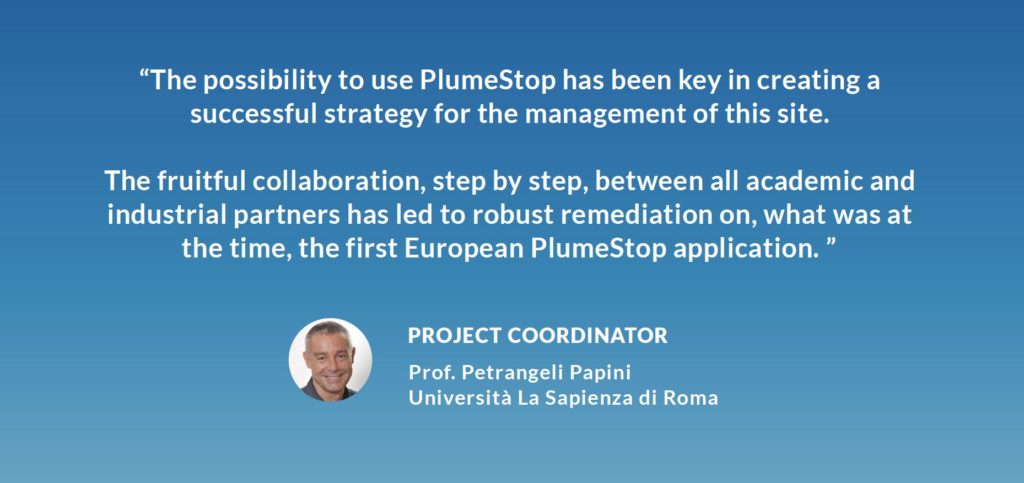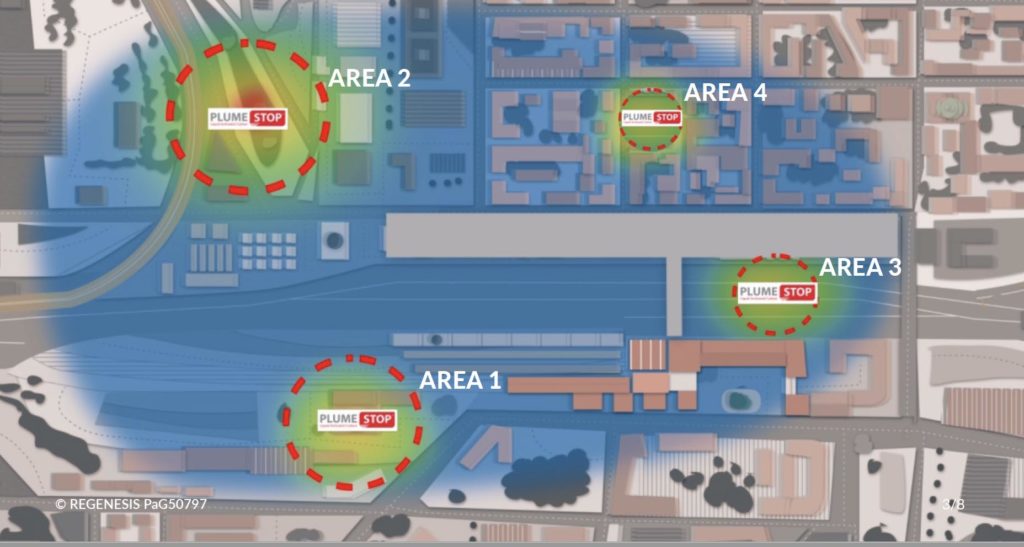Treatment of a widespread plume beneath Bologna city centre in Italy
As part of a major infrastructure renewal project comprising the construction of an underground high speed train railway terminal, a widespread low-concentration plume of chlorinated solvents (CHC) had been identified. Monitoring was completed for more than a decade and showed no effective natural attenuation was occurring.
The University of Rome ‘La Sapienza’ had been commissioned to evaluate strategies for the remediation of this large urban site. Based on the results from site investigation, lab testing and microcosm studies, biological reductive dechlorination was recognized as a potential approach. Yet, biological degradation was considered impractical for treatment on the site, due to the potential inefficiencies at such low contaminant concentrations. However, with the creation of the PlumeStop® Liquid Activated Carbon technology in 2015, another treatment approach became an option.
Case Study Highlights
- A pilot test proved the proposed treatment approach and informed the design of the full-scale works
- PCE and TCE were targeted in 4 accessible hot-spot areas
- The in situ remediation solution with PlumeStop Colloidal Activated Carbon meant only a single injection was needed with no permanent installation or equipment left on site – ideal for the busy Bologna railway station and surrounding city centre
- Long term monitoring of up to 5 years shows low contaminant concentration levels maintained over time without any rebound
5m 58s reading time





 Americas
Americas Europe
Europe Français
Français Deutsch
Deutsch Italiano
Italiano Español
Español
